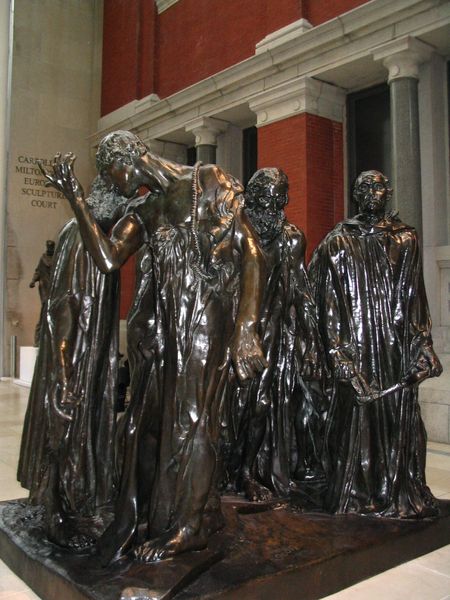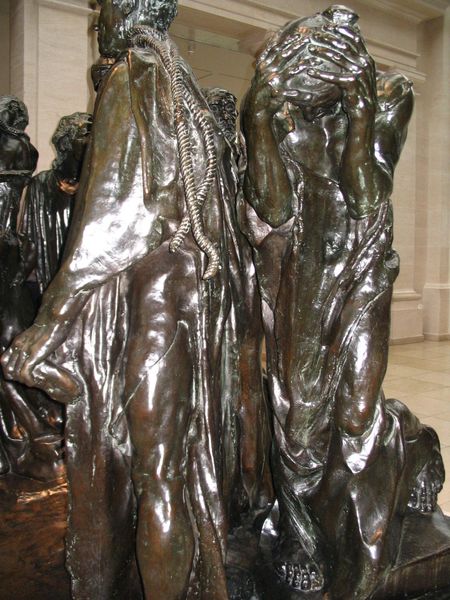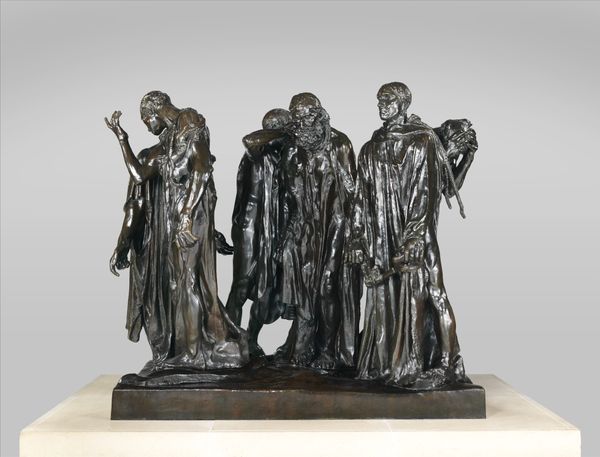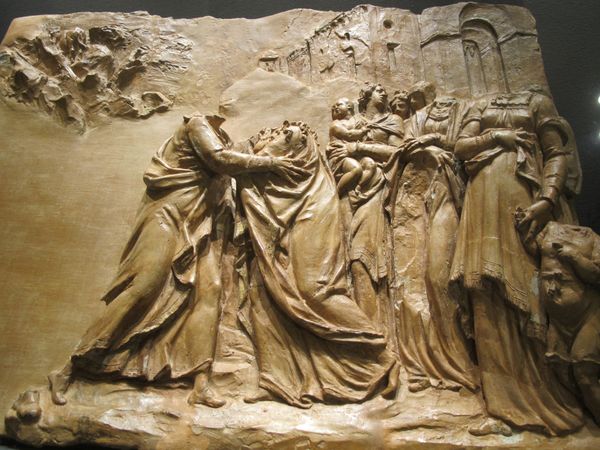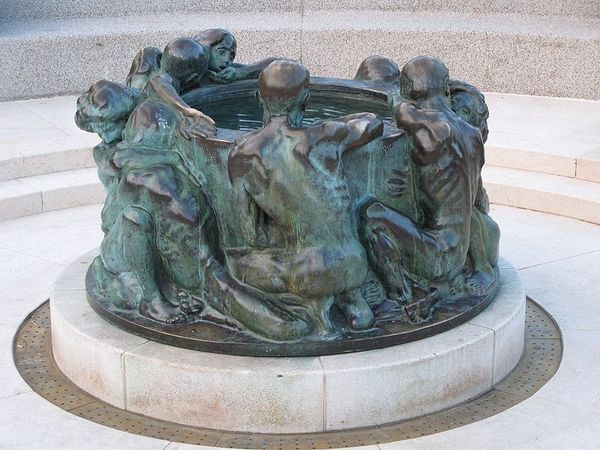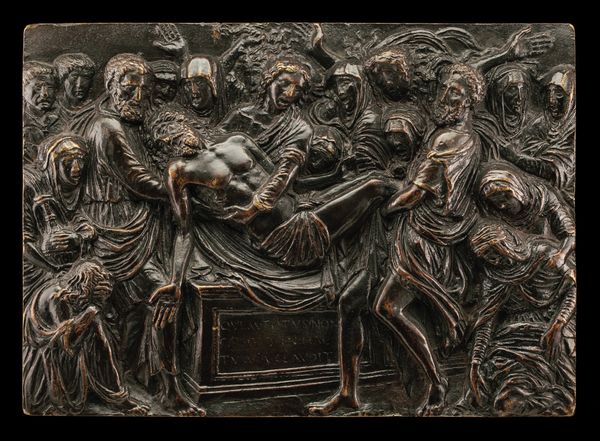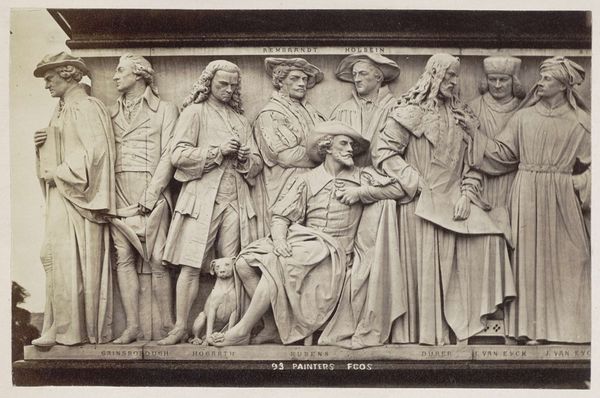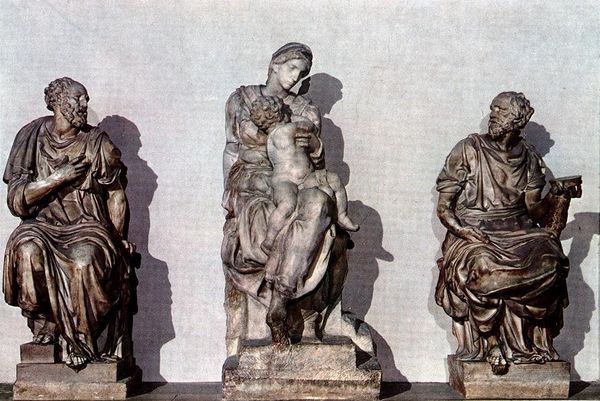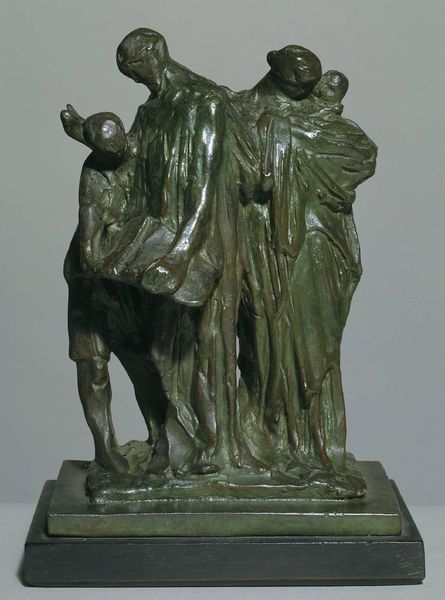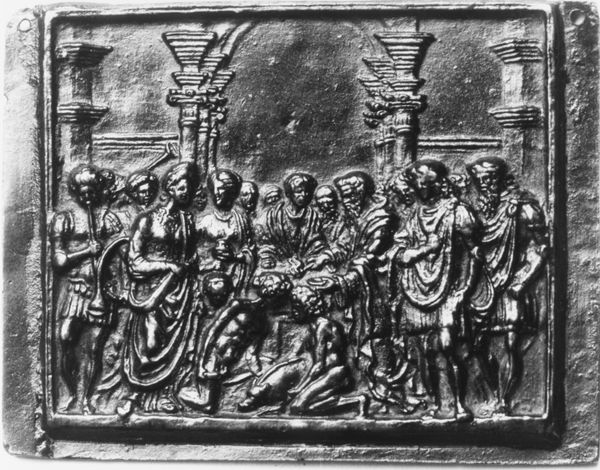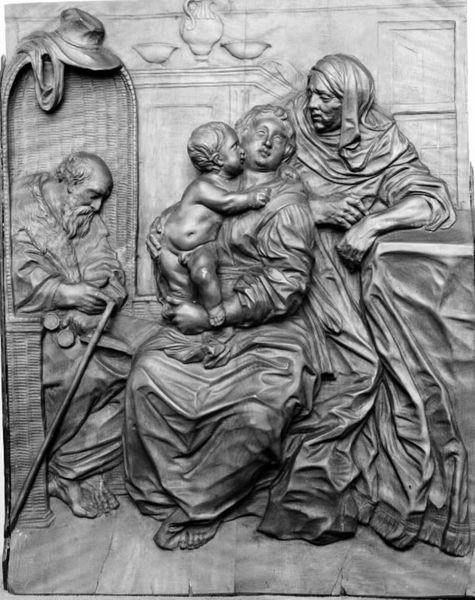
bronze, sculpture
#
sculpture
#
war
#
bronze
#
sculpture
#
group-portraits
#
history-painting
#
academic-art
#
modernism
Copyright: Public domain
Editor: So, here we have Auguste Rodin's "Burghers of Calais," a bronze sculpture from 1895. It's incredibly moving, depicting these figures with such visible anguish and resignation. How do you interpret the emotional weight carried by this piece? Curator: It’s more than emotion, I believe. Consider these figures—their robes, almost shrouds. See the ropes around their necks, the keys they carry. These are all symbols. They speak of sacrifice, but also of the specific burdens of civic leadership in times of crisis. Rodin doesn’t just show us sorrow, he reveals a deep cultural memory. How does their collective stance speak to you? Editor: I see the range of individual responses: defiance, despair, grief...it’s not a unified front. But what’s interesting is the way they’re grouped—so close, yet each trapped in their own personal torment. Curator: Precisely. Note how Rodin positions them at eye level, no heroic pedestal. This was deliberate, forcing viewers to confront their shared humanity and perhaps question the glorification of war itself. How might the symbolism challenge traditional war monuments? Editor: Well, instead of celebrating victory, it really dwells on human suffering and the ambiguities of historical events. Curator: Exactly. The piece encourages empathy. It strips away the celebratory veneer and explores the long-lasting psychological impact of historical events on a community. Think about the cyclical nature of sacrifice—is this merely a snapshot, or a continuous aspect of the human experience? Editor: It gives the sacrifice a raw immediacy, something I had not initially understood. I’m struck by how Rodin challenges the viewer to look beyond simple historical narratives and delve into the complicated realities. Thank you! Curator: And thank you. It's in these shared interpretations that we truly discover the work's profound depths.
Comments
No comments
Be the first to comment and join the conversation on the ultimate creative platform.
